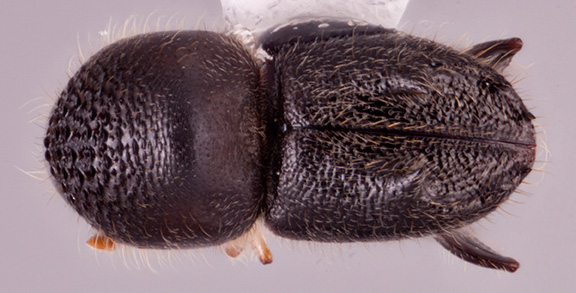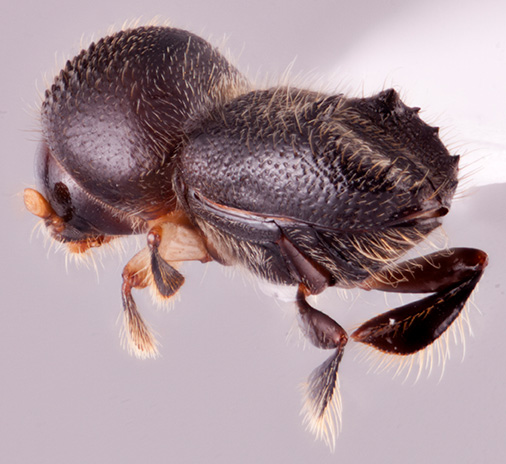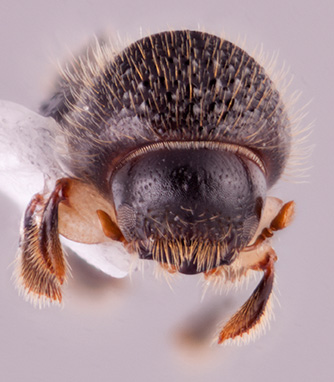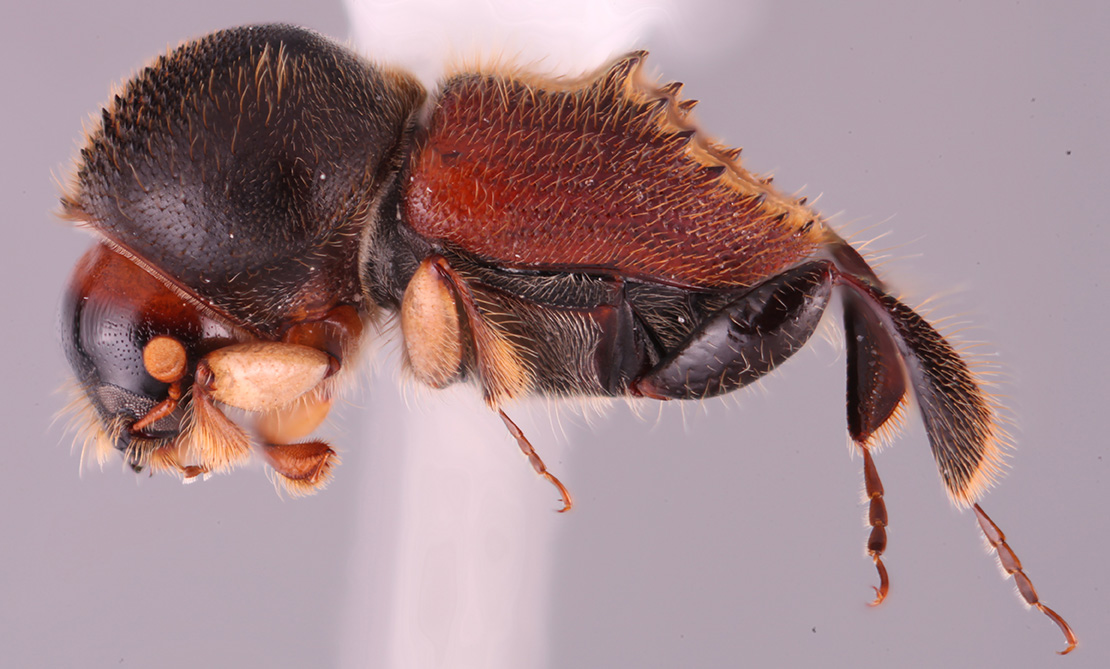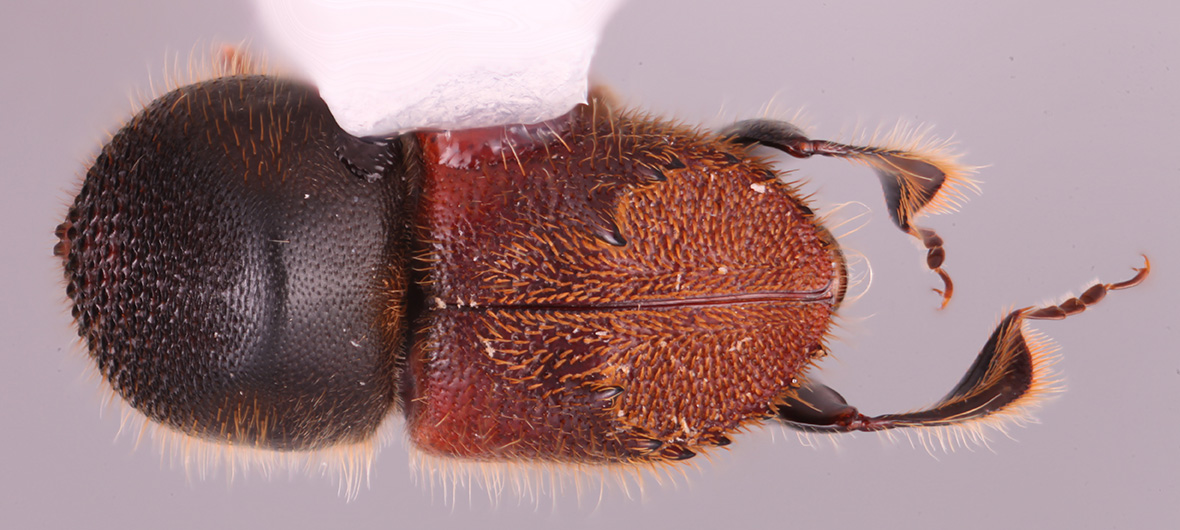Eccoptopterus
|
Eccoptopterus spinosus; R.K. Osborn |
|
Eccoptopterus spinosus; R.K. Osborn |
|
Eccoptopterus spinosus; R.K. Osborn |
|
Eccoptopterus spinosus; R.K. Osborn |
|
Eccoptopterus limbus; S.M. Smith |
|
Eccoptopterus limbus; S.M. Smith |
Taxonomy
Eccoptopterus Motschulsky, 1863: 515.
Synonyms
Platydactylus Eichhoff, 1886: 25. Preoccupied by Goldfuss 1820.
Eurydactylus Hagedorn, 1909: 733. New name for Platydactylus Eichhoff nec Goldfuss 1820. Hagedorn, 1910b: 110.
Diagnosis
2.5−4.2 mm long and stout (2.06−2.3 times as long as wide). Eccoptopterus can be distinguished by the robust pronotumpronotum:
the dorsal surface of the thorax
almost as large or larger than abdomen; pronotalpronotal:
pertaining to the pronotum
basebase:
point or edge closest to the body; opposite of apex bearing a dense tuft of setae; pronotalpronotal:
bearing a dense tuft of setae; pronotalpronotal:
pertaining to the pronotum
discdisc:
the flat central upper surface of any body part (e.g. pronotum and elytra) asperateasperate:
asperateasperate:
covered in asperities ; elytraelytron:
; elytraelytron:
the two sclerotized forewings of beetles that protect and cover the flight wings
excavated with denticlesdenticle:
a small tooth, the sides of which are equal and the tip is above the middle of the base around the margins and by the metatibiae conspicuously enlarged and flattened. In addition, the scutellumscutellum:
around the margins and by the metatibiae conspicuously enlarged and flattened. In addition, the scutellumscutellum:
a shield-like sclerotized plate located at the midpoint of the elytral base
is flush with elytraelytron:
the two sclerotized forewings of beetles that protect and cover the flight wings
and flat, and the procoxae are contiguous.
May be confused with
None. This genus is morphologically very distinctive and is not similar to other genera.
Distribution
throughout the tropical regions of Africa and Asia to New Guinea, Australia, the Solomon Islands, and Samoa
Gallery system
The radial entrance gallery leads to several branches in various planes, not penetrating more than 3–4 cm. In small diameter stems, the branches may be longitudinal. Enlarged brood chambers are absent.
Remarks
This genus is in need of revision.


